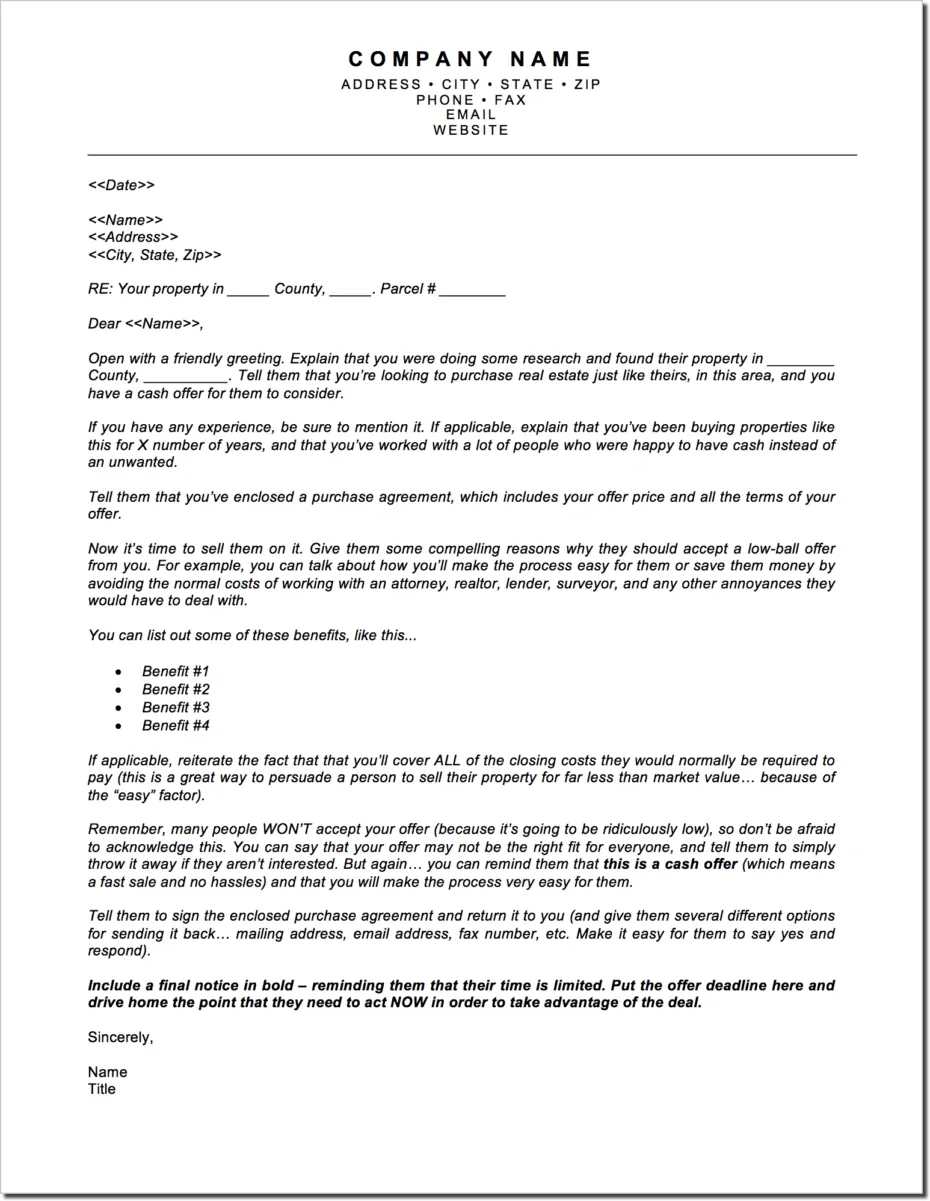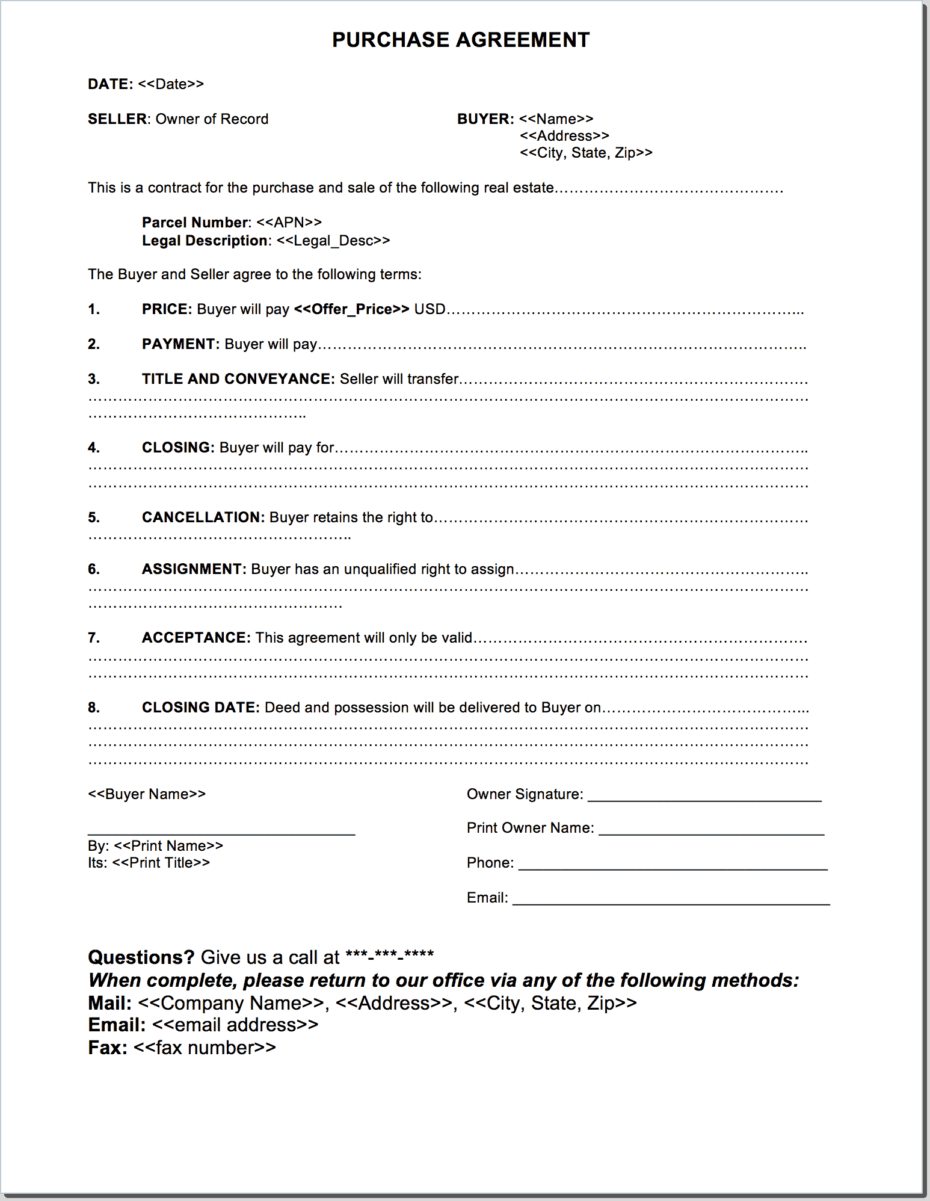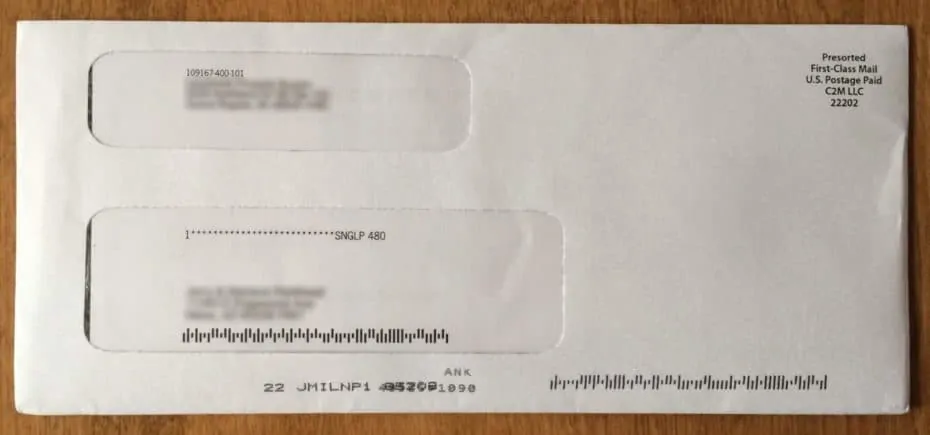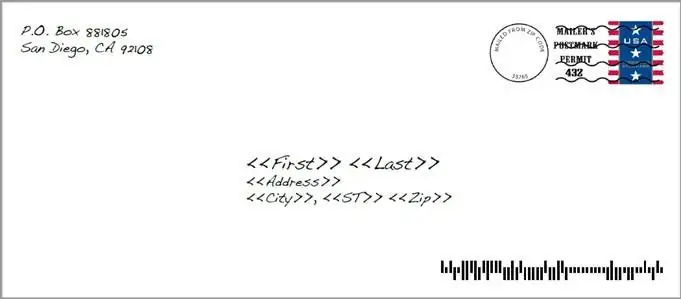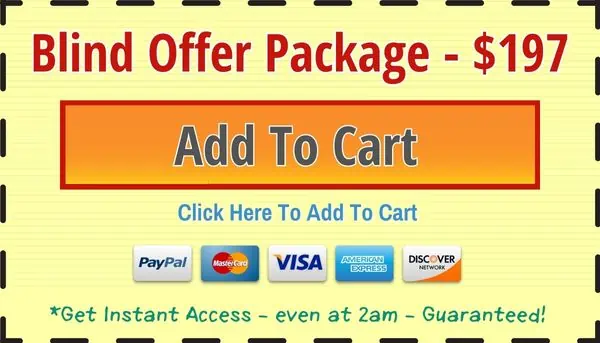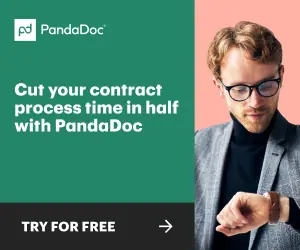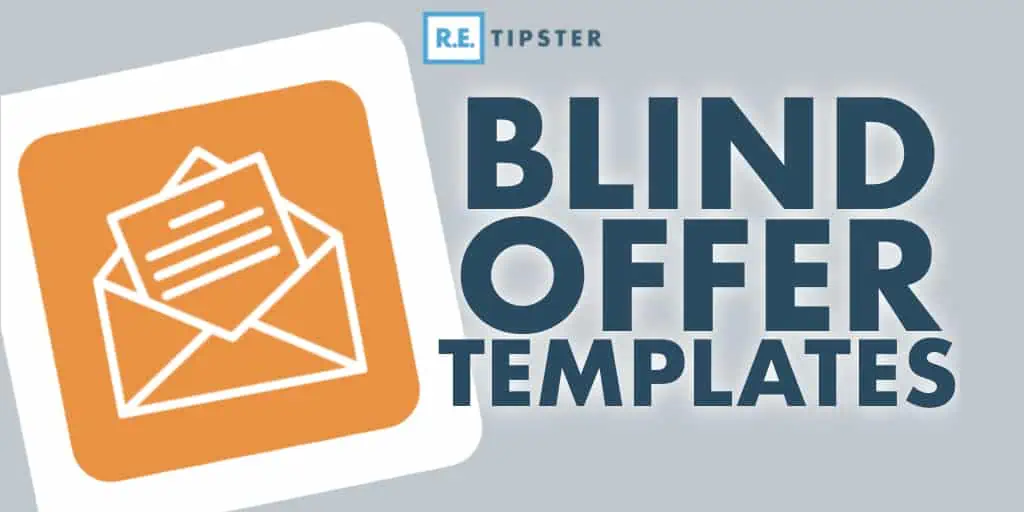
REtipster features products and services we find useful. If you buy something through the links below, we may receive a referral fee, which helps support our work. Learn more.
When I started using direct mail in my real estate investing business, I was blown away by the results.
Never before had I been inundated with more deals than I could handle… and after struggling for years to find worthwhile opportunities on the MLS, the discovery of this marketing medium was a MAJOR revelation for me.
From the moment I saw how effective it was at uncovering opportunities that nobody else knew about, it completely changed the trajectory of my business.
For a long time, my direct mail marketing strategy was pretty simple.
I used a 4.25 x 6-inch yellow postcard and sent my mail to the county's delinquent tax list, specifically seeking vacant land opportunities.
There were a few variations to the messages I would put on my postcards, but they all worked pretty well, and when I paired it with the right data and filtered each list properly – the results were nothing short of amazing.
RELATED: The Land Flipping Lifecycle
Sending the Right Message to The Right People
Direct mail was effective because I used a simple message, and I didn't send mail to everybody. I contacted a very small segment of property owners in a given market who needed exactly what I was offering.
When I reached the right people, I never had to “convince” anyone to go along with my offers because my offer was precisely what they needed. If I could make them aware of my solution without wasting their time, there was a good chance they would respond to my mail piece and contact me about doing business.
I liked using postcards because they were cheap (which meant I could reach many more people for less money). They were also very easy to send (with no mail merge required) AND hard for people to ignore… but for all of their qualities, they still weren’t the most direct way to get my offer into a seller’s hands.
Postcards were great at finding hidden opportunities to buy cheap real estate, but they always required some kind of action/response from each prospect BEFORE I could send them my low-ball offer. The process still worked well enough… but was there a better way to get deals in the bag?
An Overview of the Blind Offer Strategy

Rather than sending out an open solicitation (often referred to as a ‘neutral letter') and asking each recipient to call back or visit a website to submit their information, they were just sending every property owner a blind offer for their property.
When I first heard about this approach, my initial thoughts were…
“Could it really be that simple?”
“Am I really comfortable sending out offers without doing ANY preliminary research?”
“What if someone accepts my offer, but their property ends up being something I don't even want?”
“If my postcards are already working well, does it make sense to learn a whole new approach?”
After dealing with my initial skepticism, the more I researched and learned about the rationale behind this approach, I had to admit, blind offers seemed to make a lot of sense.
For example…
- It would eliminate some of the back-and-forths between sellers. Rather than asking them to respond to me, have a 20-minute conversation, and THEN send them an offer, I could just hit them with my offer on the first contact.
- It would be much easier to get lists and avoid messing around with the county's delinquent tax data (which can be a major hassle in many cases).
- Instead of spending my time calculating specific offer prices for each property (i.e. – the “Ready, Aim, Fire” approach), I could just send out deeply discounted offers based on each property's size or assessed value and then verify the suitability of each deal AFTER my offers were accepted (i.e. – the “Ready, Fire, Aim” approach).
- Rather than focusing only on tax-delinquent properties with my direct mail, this would also allow me to find more acquisition opportunities from sellers who weren't delinquent (deals that still came with a ton of free equity, even with their taxes paid current).
When I started sending out my blind offer campaigns, I found most of these things true.
It didn't take long before I had several acceptable offers on my desk; almost all of them were for good properties. When I saw it working, I realized it brought some real benefits to the table that postcards didn't.
Drawbacks to Blind Offers
Now I have to admit, even with all these great benefits, the blind offer strategy still had its own set of issues. As I started using this approach more and more, I found that there were a few downsides to deal with…
Time On the Phone
Initially, I assumed blind offers would eliminate all the wasted time negotiating and closing deals over the phone. After all, each property owner would already have my offer in hand… so what else is there to talk about?
Instead, I found that blind offers increased my phone time.
Backstory: When I first started utilizing direct mail nearly a decade ago, I used to spend HOURS on the phone, talking with sellers who responded to my postcards, trying to get the basic details about each property. I started to HATE talking on the phone because many of these callers weren't going to do business with me and these conversations were purely a waste of time.
To get my time back, I eventually created a buying website, which served as a way to collect the information I needed from each prospect WITHOUT all the unnecessary phone conversations (and as a side benefit, it eventually started bringing in a lot of organic visitors and free submissions as well). This allowed me to handle most of my offers via automated emails, and as a result, I could run the acquisition side of my business without spending ANY time on the phone (which I loved).
When I started sending blind offers, I found that deals rarely came to fruition without at least one or two phone calls… so it wasn't quite as feasible to run a “phone-free” business anymore. Granted, it didn't require excessive time on the phone, but it definitely took more than I had grown accustomed to.
Higher Cost
Since the cost of postage was more expensive for letters (vs. postcards) and each mailpiece consisted of two pages in an envelope (vs. a small piece of cardstock), each direct mail campaign went up substantially.
Furthermore, when I bought lists from various data services, the lists usually ended up being more expensive than the lists I could get from the county. However, this aspect could range quite a bit because some county lists are very cheap, and others are expensive.
Lower Response Rate (But Similar Acceptance Rate)
After several years of sending postcards to the tax delinquent property owners in the counties where I've worked, I've seen a fairly predictable response rate to the mailers I send out.
Typically, I would hear back from 5% – 10% of the recipients, and for every dozen offers (approx) I would send out, I would usually get one acceptance… which comes out to a final acceptance rate of .05% – 1%.
When sending out blind offers, I found that the response rate was slightly lower (around 2% – 3% in my experience), and many of the responses were angry callers.
The angry responses didn't bother me much since I had taken the time to create a new, pre-recorded voicemail greeting (designed specifically for blind offer campaigns) to filter all these calls, I didn't have to waste any time taking their abuse.
Interestingly, even though I've seen a lower response rate to these blind offer campaigns, the acceptance rate (i.e. – the part that actually matters) has been around .05% – 1% – which is the same acceptance rate I've seen with postcards.
Note: One important thing to remember is that I have always erred on the side of sending out very low, very conservative offers (whether I'm using postcards or blind offers), usually around 15% – 20% of market value. As a result, I would estimate that the acceptance rates I've seen are generally on the lower end of average. I've heard from others who have seen higher acceptance rates with both approaches, and this is probably due (at least in part) to the fact that many investors send out higher offers than I do.
When Do Blind Offers Make Sense?
After working with these letters for a while now, I wouldn't conclude that this is the ULTIMATE, no-brainer strategy for finding great deals, but it does come with some undeniable advantages that will appeal to many real estate investors.
If a person is willing to spend a little more money upfront and pick up the phone to talk with sellers regularly, this direct mail strategy can eliminate a lot of wasted time in dealing with the county's messy data and in crafting hand-tailored offers that will most likely get turned down anyway.
Furthermore, the ability to target specific types of properties based on size, location, current uses, and assessed values (among many other things) is a MAJOR advantage that in my opinion, can justify the extra costs rather quickly (assuming you have the extra money to spend in the first place).
Even though postcards allow an investor to get started on a tighter budget, look at each opportunity and craft deal-specific offers that might make more sense to each seller… I must admit that blind offer campaigns have been substantially easier to deal with.
My Blind Offer Template
After seeing how blind offers have produced real, tangible results for me, I wanted to provide a few resources for anyone who wants to pursue this avenue further.
When I made my foray into the realm of blind offers, I created my unique template, using many of the same wording and persuasion principles I had built into my original postcard templates.
After years of seeing great results with these postcards, I felt like I had learned a thing or two about eliciting responses from the right people – and I wanted to incorporate those same elements into the letters I was sending out.
Below, you can take a quick look at the format.
(Note: These examples don’t contain the exact wording of my letters, but they'll give you a general idea of what they say. Feel free to use this example to create your version… or if you want to see the precise language I use in my blind offers, you can download my templates at the bottom of this blog post).
Page 1
Page 2
As you can see – this template consists of 2 pages that explain all the essentials without going overboard. Each recipient can make their own decision, giving them several options for getting in touch with me if they choose to accept the offer.
How to Do a Mail Merge
One important thing about these letters (which differs from my original postcard approach) is that blind offers require you to do a mail merge.
When you're sending a specific offer price, for each specific parcel, with a unique purchase agreement that includes each property owner's name, an expiration date, and a closing deadline – there is no way to do this effectively without merging a few pieces of variable data into each mail piece.
A mail merge adds a bit of complexity to the process, but it's not hard. If you've never done this before, I'll show you the basics of how it's done in this video…
Note: In the video above, I'm using Microsoft Office 2016. If you're using a different version of Word, the mail merge commands may be in a different location.
Sending the Mail
When sending out a direct mail campaign of any kind, it ALWAYS makes more sense to use a printing/mailing service, rather than trying to print, sign, stamp, and mail all of your letters from your home computer and printer.
That's not my opinion – it's just a simple fact. It's cheaper. It's faster. It's WAY more efficient. And it will save you hours (maybe even days) of time.
The first time I tried sending out blind offers, I did it with Click2Mail because I had used this service many times and was familiar with how it worked.
Click2Mail has a tool that allows users to perform a mail merge outside of Microsoft Word, but after going through the process a few times, I thought it was pretty clunky and cumbersome to work with. With enough time and patience, it worked fine, but it seemed like there had to be a better way.
Here's what the unopened letters from Click2Mail look like to each recipient…
As you can see… it can work, but it also has a very “corporate” look (like it's a bill or some kind of junk mail) and doesn't have a very personal feel – whatever that's worth.

With Rocket Print, rather than putting you in total control of the order, each order passes through an actual person who can verify that everything looks right BEFORE sending you the proof for your final approval.
They also offer A LOT of different options for what kind of mail unit you send out and how it works. For example…
- You can include it in a windowed OR non-windowed envelope.
- You can use a hand-written font or a normal text font.
- They offer discounted postage options for standard pre-sort mail.
- Quick assistance with mail merge campaigns is readily available.
- Mail can be sent out in multiple batches.
- Several different paper types and perforation options are available.
- Etc…
Here's what the unopened letters from Rocket Print look like…
If you want to try Rocket Print & Mail, this video gives a quick overview of their ordering process…
Sign up through the REtipster affiliate link or call Rocket Print & Mail at 1-888-218-6123. Remember to mention that you're coming from the REtipster Community and get access to special pricing!
Want To Use My Blind Offer Templates?
Just to round out this blog post – I wanted to give you one final tool to use in case you want to try your hand at sending out blind offers.
As you probably noticed from the examples shown above, these snapshots are meant to show you the format of my blind offer template, but not the exact wording. I do this because I'm not an attorney, and I'm not smarter than you. If you want to draft your blind offer letter and contract – you are probably just as capable as I am (seriously, it's not hard).
At the same time, I always appreciate having convenient options available to get the job done – so if you'd rather download a done-for-you template that's ready to rock, you can use the same thing I do (and just for kicks, I’ll throw in a couple of extra goodies to help you along the way).
Lastly, keep in mind my templates are used for making offers on vacant land (my primary investment niche), so if your goal to make offers on houses or other types of properties, it may be in your best interests to tweak this template to fit your situation appropriately.
Note: When you sign up as an REtipster Email Subscriber, I’ll send you an instant $20 off “Discount Code” for this item. No pressure of course – but the discount is there if you want it.
One Final Note

It's also crucial to use a good list, filter the data for correctly the property types you want to target, sort through your list adequately, and structure your offer prices appropriately. If you don't have all of these things buttoned up, your response rate and acceptance rate will suffer.
If you need a more in-depth look at how I handle these aspects of the blind offer strategy for vacant land, I've put together a detailed set of instructions on all of this information – and you can find it in Module 2, Lesson 8 of the Land Investing Masterclass.




